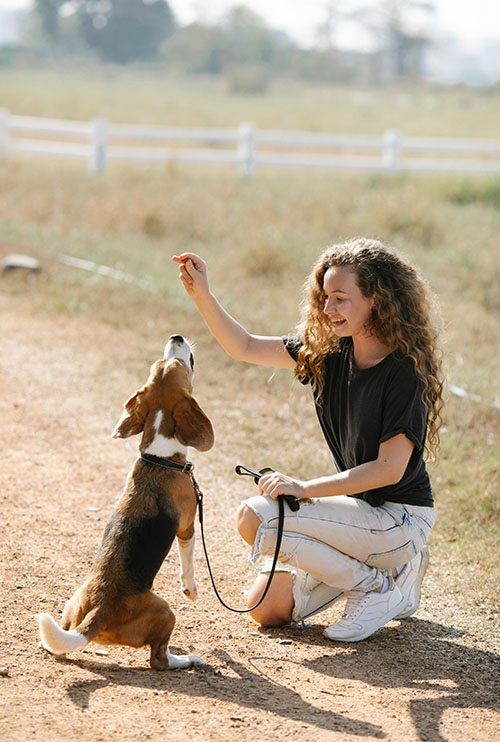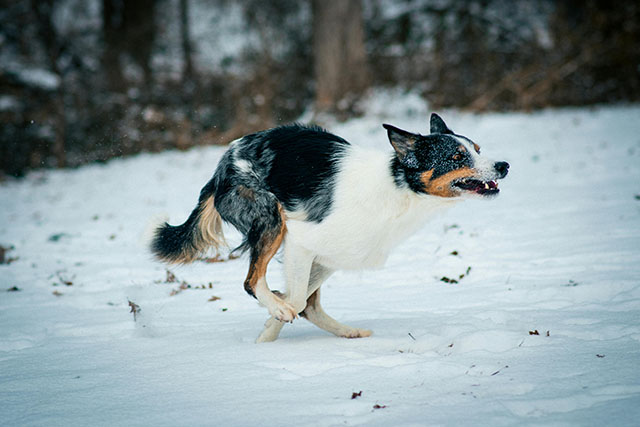Teaching your dog a new trick is more than just a fun way to spend time together; it’s a chance to strengthen your bond and improve their obedience skills. Among the classic tricks that dog owners love to teach is the “rollover.” It might seem like a complex task at first, but with patience, consistency, and a pocket full of treats, you’ll find it’s quite achievable.
Whether you’re working with a sprightly puppy or an older dog set in its way, this guide will walk you through the steps to teach your furry friend to roll over. Get ready to impress your friends and family with your dog’s new party trick!
Can All Dogs Learn to Roll Over?
In theory, yes, most dogs can learn to roll over, but the ease with which they pick up this trick can vary widely based on factors like age, breed, physical condition, and temperament. Puppies often learn quicker due to their higher levels of energy and eagerness to please, whereas older dogs might need a bit more patience and encouragement.
Some breeds with longer bodies or those that are a bit more stiff in the joints could find the physical act of rolling over a bit more challenging. However, with gentle guidance, patience, and the right motivation (think tasty treats!), most dogs can master the art of rolling over with time and practice.
At What Age Can a Puppy Learn to Roll Over?
Puppies as young as three to four months old can start learning simple commands such as “sit,” “stay,” and “come.” When it comes to more physically involved tricks like rolling over, it’s often recommended to begin teaching them around the age of five to six months.
At this age, they have developed enough coordination and attention span to follow through with the training process. It’s also a golden time for socialization and establishing good behavior patterns.
However, it’s important to keep training sessions short, fun, and positive, as puppies have limited concentration spans.
How Do I Train My Dog to Roll Over?
Training your dog to roll over is a fun and rewarding experience. Follow these simple steps to guide your furry friend through the learning process:
- Start with the Basics: Ensure your dog has mastered basic commands like “sit” and “down,” as these form the foundation for rolling over.
- Choose the Right Location: Find a comfortable, quiet space without distractions. A soft surface like grass or a carpeted area using a Non-Slip Indoor Floor Carpet is ideal to prevent discomfort during rolling.
- Use Treats for Motivation: Hold a treat in your hand, like Pet Botanics Training Rewards Treats, and get your dog to lie down. Then, hold the treat close to their nose to get their attention.
- Guide the Roll: Slowly move the treat from their nose towards their shoulder, encouraging them to lie on their side. Continue leading the treat around their head to their back, encouraging a full roll. It’s important to move the treat at a pace that ensures your dog follows it with their nose, resulting in a roll.
- Practice and Patience: Your dog may not perform a full roll immediately. If they only make it halfway, praise them for the effort and keep practicing. You may also give multivitamin supplements that support active brain function, such as VetIQ. It may take several sessions for them to understand what you’re asking.
- Use Verbal Cues and Rewards: Once your dog begins to understand the motion, introduce a verbal cue like “roll over” before you start guiding with the treat. Always praise and reward them after successfully completing the roll.
- Gradual Fade of Hand Guidance: As your dog gets more comfortable with the trick, gradually reduce the hand movements and treat leading. Encourage them to roll over with just the verbal command and reward them each time they perform the trick successfully.
Remember, every dog learns at their own pace. Keep the training sessions short, positive, and fun for both of you. With consistency and patience, your dog will be rolling over in no time!
What are the Hardest Tricks to Teach a Dog?
Teaching a dog new tricks can be an enjoyable and rewarding experience, but some tricks prove to be more challenging than others. Here are a few of the hardest tricks to teach a dog:
- Play Dead – This trick involves your dog lying down and remaining still as if they were “dead.” It requires your pet to have a great deal of patience and discipline.
- Speak or Bark on Command – Teaching a dog to vocalize on cue can be tricky as it requires them to understand when it’s appropriate to bark and when it’s not.
- Fetch Specific Items by Name – Training a dog to recognize and fetch particular items by name demands a lot of repetition and the ability to distinguish between different objects.
- Walking Backwards – This trick can be challenging as it goes against most dogs’ natural movement and requires them to have good spatial awareness and trust in their handler.
- Skateboarding – Skateboarding is a complex trick that not only requires balance and coordination but also a fearless attitude from your dog.
- The Weave – Teaching your dog to weave through your legs as you walk involves a high level of precision and timing, making it one of the more difficult tricks to master.
Each of these tricks requires patience, consistency, and a positive reinforcement approach. Remember, the key to successful training is keeping the sessions short, enjoyable, and rewarding for your furry friend.
What are Tricks You Shouldn’t Teach Your Dog?
While teaching your dog new tricks can be fun and rewarding to enhance your bond, certain tricks might be best avoided. Here are a few tricks that could potentially lead to behavior issues or safety concerns:
- Jumping Up on People – While it might seem cute for a small puppy to jump up for attention, encouraging this behavior can lead to problems as your dog grows. Larger dogs especially can accidentally injure someone by jumping up.
- Begging for Food – Teaching your dog to beg at the table can create a persistent beggar and lead to obesity or health issues from eating unsafe human foods.
- Barking for Attention – Training your dog to bark to get your attention might result in excessive barking issues, which can be a nuisance and difficult to control.
- Chasing Lights or Shadows – Some owners might find it amusing to teach their dogs to chase after a flashlight beam or shadows. However, this can lead to obsessive behaviors and anxiety.
- Playing Rough – Encouraging your dog to play in a rough manner can increase aggression and might lead to unintentional injuries to themselves, other animals, or people.
As a responsible dog owner, it’s important to only teach your furry friend tricks that are safe and beneficial for both of you.
Bonding with Your Dog Through Tricks
Teaching your dog tricks like rolling over is not just about showing off their skills; it’s an opportunity to strengthen your bond and build trust between you. Training can be a fun and positive experience for you and your dog when done correctly.
Always use positive reinforcement, keep training sessions short and enjoyable, and never force your pet to do something they’re uncomfortable with. With patience and consistency, you’ll soon have a well-trained dog that can impress everyone with their new party trick!
So go ahead and grab some treats, clear some space, and let the training begin!
Jessica is a veterinary medicine student who is passionate about animals. Living with her cherished dog, Milo, deepens her understanding of the human-animal connection, enhancing her empathy as a future veterinarian.
Jessica’s concise articles reflect her dedication to improving the lives of animals and those who care for them, making her an inspiring figure in the pet care field.







